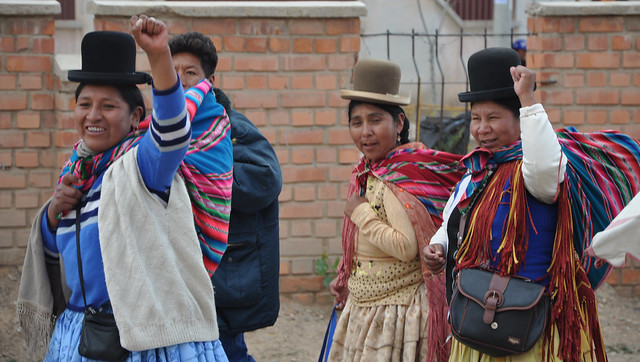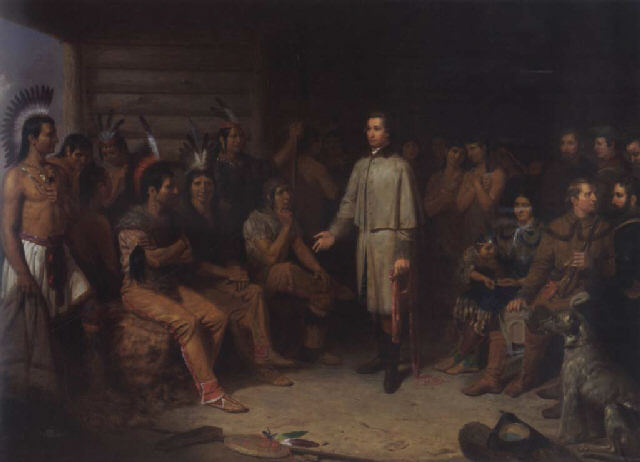Sartorial Hybrids: Traditional Dress Quirks Throughout History
Sometimes fashion is like one big game of “One of these things (is not like the other).” The only course is to question how such a seemingly incongruous article of clothing came to call that particular person-slash-people home…
While walking through the Minneapolis Institute of Art, I came upon an exhibit dedicated to international textiles. It got my mind a-churning. Given such a long history of silk and textiles dominating early global trade – not to mention that it often provided the impetus for early explorers’ attempts to expand their maps’ boundaries – it’s no wonder that a style of dress has the history of its wearer’s people woven into its being, both literally and figuratively.
As a kid, I remember looking around my third grade classroom at all the images of traditional dress from other parts of the world hung on the walls. I even asked my mom to replicate the braids depicted on, I think, the Swedish girl. It was during this same period that I first encountered one of the world’s more prominently acknowledged sartorial quirks, the one that had most piqued my interest yet laid dormant until my recent trip to the MIA:
The Bowler Hat - Aymara Population, Bolivia

(source)
These cholitas, urban women (often of the lower socio-economic class) who pride themselves in wearing traditional fashions continue to pair their full skirts, knit cardigans and wool capes with a jaunty bowler hat, or bombin, perched atop their heads. The bowler has remained the most popular topper since the 1920s despite the hat’s precipitous decline throughout the rest of the world. Today the majority of bowler hats are produced within Bolivia, proving an unexpectedly valuable acquisition in a strange cultural trade-off.
Some say British railway workers are to thank for the style. As one story goes, a massive order was filled and shipped, only the intended recipients found them too small for their heads, whence the ill-fitting hats were distributed to locals. This theory would explain why the Aymara continue to favor hats that are noticeably too small for their heads (apparently cheaters use bobby pins to assure theirs remain perfectly perched).
Others claim that the sturdy style – originally designed for hunters whose hats would often fall or be knocked from their heads while riding – gained popularity after a Bolivian man thought to market an (the?) excessively large shipment to women as the latest fashion trend. Regardless, the Aymara continue to love their bombins, and I can’t help but reciprocate the love.
Women’s Traditional Dress - Herero Population, Namibia

(source)
Namibia was one of Germany’s prime African colonies during the “Scramble for Africa” in the late 19th and early 20th centuries. As the colonial settlers sought to expand their land claims and develop new infrastructures, a great conflict between the Herero, herdsmen who had lived off the land for the past few hundred years, and the new occupiers came to a head. Between 1903 and 1907, nearly 75% of the Herero population had been forced into camps and executed.
As an early tactics for appeasing their colonizers, Herero women began dressing in more “acceptable” Victorian fashions, supplanting the leather and studded garments they’d previously worn. The imposed attire has stuck with the Herero ever since; the only outfit now befitting married Herero woman includes long sleeves, a tight bodice with high collar, and full skirts supported by under layers of crinoline and six to eight petticoats. When measured together, the fabric in a single Herero dress can amount to 15 meters!
Though the style and silhouette of their dress may have evolved in an attempt to appease aggressors in spite of the extremely warm climate, their hats of rolled cloth “horns” serve as a nod to the cattle that has always been so central to their culture.
On the more micro level, examples of cross-cultural influence in dress abound:
Beaded Capelet - Seneca Tribe, United States
New possibilities of ornamentation accompanied the arrival of European trade in the Great Lakes region of North America. While adhering to a traditionally European silhouette, the design’s intricacy increased even as the undulating lines, double curvature and linear designs referenced traditional Woodlands quillwork patterns. Museum curators hypothesize that this coat collar was probably made with the intention of serving as a gift after the piece was bestowed on a Euro-American lawyer from western New York in 1803.
Feather Cape - Meshkwahkihaki (Mesquakie) Tribe, United States
Garments like this feather cape are such hybrids of European and Native American cultures that historians continue to debate which group originated the style. Often used in evidence is Junius Brutus Stearns’ painting “Washington and the Indian Council” featuring an Iroquois woman in a very similar feather cape.
(source)
The presentation of a similar article to a doctor in 1839 by Chief Powasheik, whose own daughter was said to have made the feather cape herself seems to support the indigenous origin theory. It is equally plausible that this feather cape has its roots in the peletine, a European cape made from feathers or fur.
But wait! That said, it’s only fitting that we end this dissertation on a garment so exemplary of the chicken-versus-egg scenario in the evolution of fashion; even among those scholars who agree that the peletine fathered the Mesquakie version, some have suggested that the peletine has its roots in a feathered version crafted by native… Hawaiians!




Follow us on Twitter to get the latest on the world's hidden wonders.
Like us on Facebook to get the latest on the world's hidden wonders.
Follow us on Twitter Like us on Facebook